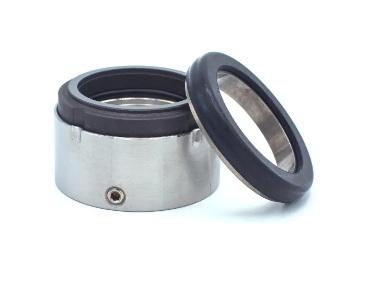Understanding Leakage in Agitator Seals
Primary Causes of Seal Leakage
Seal leakage is a common issue in agitator systems, often rooted in various causes. First, pressure fluctuations can induce micro-leaks that evolve into significant fluid losses over time. This makes regular monitoring of pressure levels critical in mitigating such issues. Secondly, inadequate seal installation or poor fitting frequently results in leakage, underscoring the importance of adhering to the manufacturer's specifications during installation. Chemical incompatibility between the seal material and the processing fluid can accelerate wear, further leading to leaks. Therefore, selecting seals based on the fluids they will encounter is vital. Lastly, temperature fluctuations are known to weaken seals over time. Analyzing historical data on temperature variations can help foresee potential leakage risks and prepare appropriate countermeasures.
Step-by-Step Fixes for Persistent Leaks
Addressing persistent leaks involves several crucial steps. Initially, it's essential to identify the leak's source through a thorough inspection, preferably aided by a leak detection system to expedite the process. Once identified, cleaner components and replace any worn-out parts like O-rings or gaskets to restore a proper seal. It's also crucial to reapply sealant or lubricant as the manufacturer recommends, especially targeting areas prone to leaks identified through usage data. After repairs, testing the system to confirm the effectiveness of these fixes is essential. Conducting pressure tests helps ensure that no additional leakage occurs, thereby maintaining operational efficiency and safety.
Common Agitator Seal Issues & How to Fix Them
To further underline the significance of addressing seal issues, it's beneficial to explore common agitator seal problems and their solutions. Regularly inspecting seals and following manufacturer guidelines can preemptively resolve many issues before they escalate into critical problems. Proper maintenance routines and choosing appropriate seal materials for specific conditions form the foundation of effective seal management, minimizing downtime and extending seal life.
Overheating: A Silent Killer of Agitator Seals
How Temperature Impacts Seal Integrity
Excessive heat is a primary concern for seal integrity, as it can significantly degrade materials. Research indicates that seal lifespan may decrease by up to 50% when exposed to temperatures exceeding their recommended limits. High temperatures cause thermal expansion, leading to potential gaps in sealing and eventual leakage. It's crucial to understand the thermal expansion coefficients of materials to make informed selection decisions. Moreover, constant exposure to high temperatures can lead to polymer breakdown, especially in elastomeric seals. This emphasizes the need for regular temperature checks as part of our maintenance protocols to prevent unexpected failures.
Cooling Strategies to Prevent Thermal Damage
To combat overheating and protect seal integrity, we should consider implementing cooling strategies. An active cooling system, such as chillers or heat exchangers, can significantly reduce temperature fluctuations. Regular maintenance of existing cooling systems is crucial, as neglect can lead to reduced efficiency and potential seal damage. Additionally, thermal insulation of hot surfaces aids in consistent temperature regulation, thereby prolonging seal life. These strategies are vital to our approach, ensuring our seal systems remain effective and operational, even in demanding environments.
Seal Face Damage and Material Degradation
Identifying Abrasion and Chemical Erosion
Understanding the signs of seal face damage is crucial for preventing further issues in agitator seals. One key indicator is abrasion, which can be identified through regular inspections. Techniques like ultrasonic testing are effective in precisely assessing wear patterns on seal faces. Moreover, chemical exposure poses a significant risk as it can lead to erosion. Using a material compatibility chart helps identify which materials can withstand specific chemicals effectively. Addressing minor abrasions promptly by implementing a monitoring regimen is also essential, as it aids in prolonging the seal's lifespan and preventing costly downtime.
Material Selection Guide for Durable Seals
Selecting the right seal materials tailored to specific application needs is vital for ensuring durability and optimal performance. Key properties to consider include hardness and resistance to the process fluid used in operations. Collaborating with material engineers can significantly assist in determining the most suitable alloys or composites that can withstand harsh environments. Additionally, evaluating the past performance of seal materials can guide future selections, enhancing both reliability and reducing potential downtime, which ultimately supports continuous operation efficiency.
Vibration and Misalignment Issues
Diagnosing Mechanical Imbalance
Diagnosing mechanical imbalance is crucial to preventing seal failure. By tracking vibration patterns with accelerometers, we can swiftly identify any imbalances. These tools help pinpoint when and where vibrations are excessive, which may otherwise lead to seal damage over time. Implementing routine balancing of agitators can also stave off misalignment, reducing risks linked to seal performance decline. Collaborating with vibration specialists can offer additional insights into more intricate mechanical challenges, ensuring that systems operate smoothly. Unaddressed mechanical imbalance not only compromises the seal’s integrity but can also exacerbate wear and tear across other system components.
Alignment Correction Techniques
Correcting alignment issues with precision is essential for the longevity of mechanical seals. Utilizing laser alignment tools is one of the most effective methods, offering high precision in correcting alignments. Regular checks should be incorporated based on operational hours to maintain optimal performance. It's also important for plant operators to be well-trained in alignment procedures, thus ensuring proactive maintenance practices are consistently applied. Additionally, real-time monitoring systems can detect misalignment early, providing alerts that can prevent prolonged downtime due to major repairs. With these techniques, we can significantly reduce the occurrence of issues that compromise seal effectiveness, ensuring reduced operational disruptions.
Preventative Maintenance Best Practices
Routine Inspection Checklist
Developing a detailed inspection checklist is essential for efficient preventative maintenance. This checklist should encompass visual inspections, physical tests, and performance metrics, which together form a holistic view of equipment condition. Regular training sessions can equip maintenance teams with the knowledge to spot potential issues early on, allowing for timely intervention. Furthermore, maintaining detailed inspection records enables us to anticipate potential failures by analyzing historical data and recognizing patterns or trends.
Lubrication Protocols for Longevity
Implementing a structured lubrication schedule tailored to equipment usage significantly extends the life of mechanical seals. It's crucial to understand the different types of lubricants and their specific roles in maintaining seal integrity. Adopting automatic lubrication systems enhances consistency and lowers the risk of human error. I frequently review our lubrication methods and update them as needed. This ongoing refinement not only boosts performance but also mitigates wear and tear, thereby sustaining seal longevity.
FAQs on Agitator Seal Leakage and Maintenance
What are the main causes of seal leakage in agitator systems?
The main causes include pressure fluctuations, inadequate seal installation, chemical incompatibility, and temperature fluctuations. Understanding these factors helps in selecting the right seals and implementing preventative measures.
How can I fix persistent leaks in agitators?
Persistent leaks can be fixed by identifying the source, replacing worn parts, and applying sealant as recommended. Testing after repairs is crucial to ensure effectiveness and prevent future leaks.
Why is temperature control important for seal integrity?
Temperature control is vital as excessive heat can degrade seal materials, leading to leakage. Implementing cooling strategies and regularly monitoring temperature can mitigate these risks.
How do vibrations affect agitator seals?
Vibrations can cause seal damage over time. Tracking vibration patterns and ensuring proper alignment through precise techniques helps maintain seal integrity.
What maintenance practices are recommended for agitator seals?
Regular inspections, maintaining lubrication protocols, and training maintenance teams are essential practices. A detailed routine inspection checklist can identify potential issues early on.


